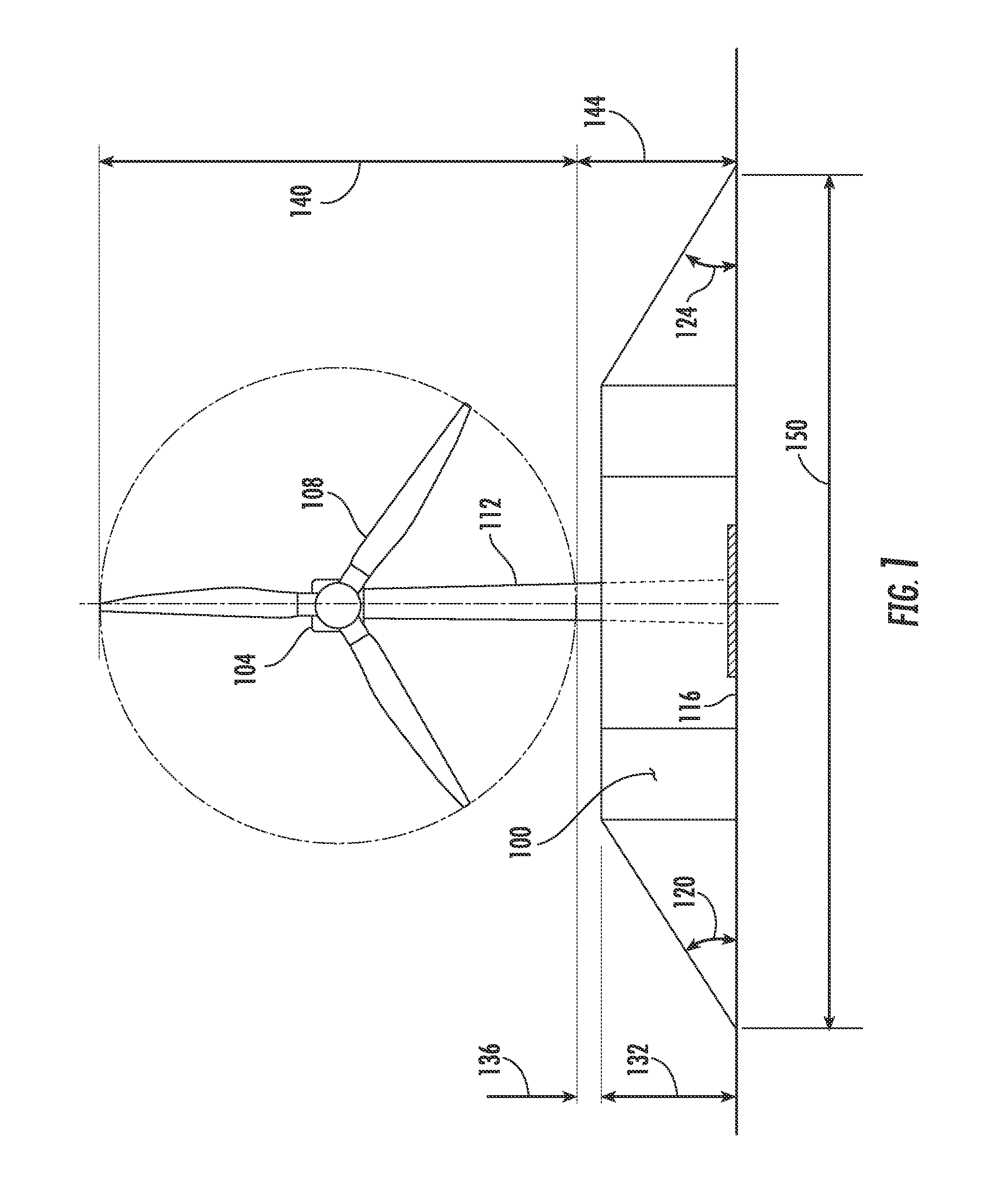Wind Diverter
a wind turbine and wind power technology, applied in the direction of machines/engines, stators, liquid fuel engines, etc., can solve the problems of limiting the capacity of wind turbines to extract all of the power available from the surrounding wind, reducing efficiency, etc., and achieve the effect of increasing the wind speed of the available wind and increasing the power generated by the wind driven turbin
- Summary
- Abstract
- Description
- Claims
- Application Information
AI Technical Summary
Benefits of technology
Problems solved by technology
Method used
Image
Examples
Embodiment Construction
[0045]Current wind turbine design is based upon building the turbines as high as possible in order to raise the rotors as high as possible. Wind speeds are faster at higher elevations and current wind turbine designs seek to capture as much of these higher wind speeds as possible.
[0046]One of the limiting factors in current wind turbine design is the length of the rotor blades. Rotor blade length is restricted by the material of construction; i.e. aluminum, fiberglass or carbon fiber, to name a few. A limiting factor for the design of a wind turbine is that the maximum size of a rotor blade is dictated by the material of construction and current designs are reaching their maximum blade length for the materials of construction currently available. The total wind turbine height is therefore determined by the hub height plus the rotor blade length, with the rotor blade length restricted by the materials of construction available for use.
[0047]With these design parameters in mind, the r...
PUM
 Login to View More
Login to View More Abstract
Description
Claims
Application Information
 Login to View More
Login to View More - R&D
- Intellectual Property
- Life Sciences
- Materials
- Tech Scout
- Unparalleled Data Quality
- Higher Quality Content
- 60% Fewer Hallucinations
Browse by: Latest US Patents, China's latest patents, Technical Efficacy Thesaurus, Application Domain, Technology Topic, Popular Technical Reports.
© 2025 PatSnap. All rights reserved.Legal|Privacy policy|Modern Slavery Act Transparency Statement|Sitemap|About US| Contact US: help@patsnap.com



